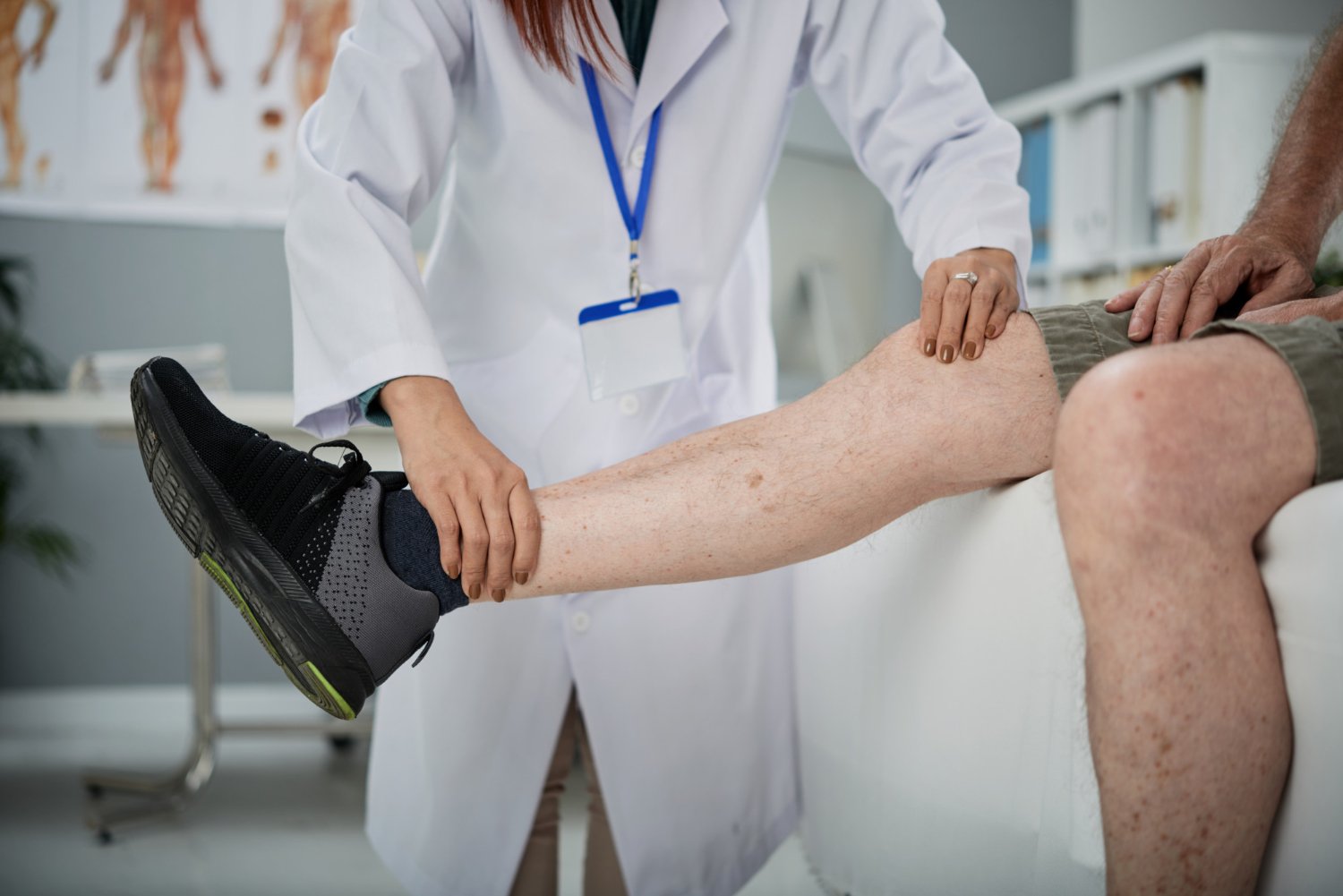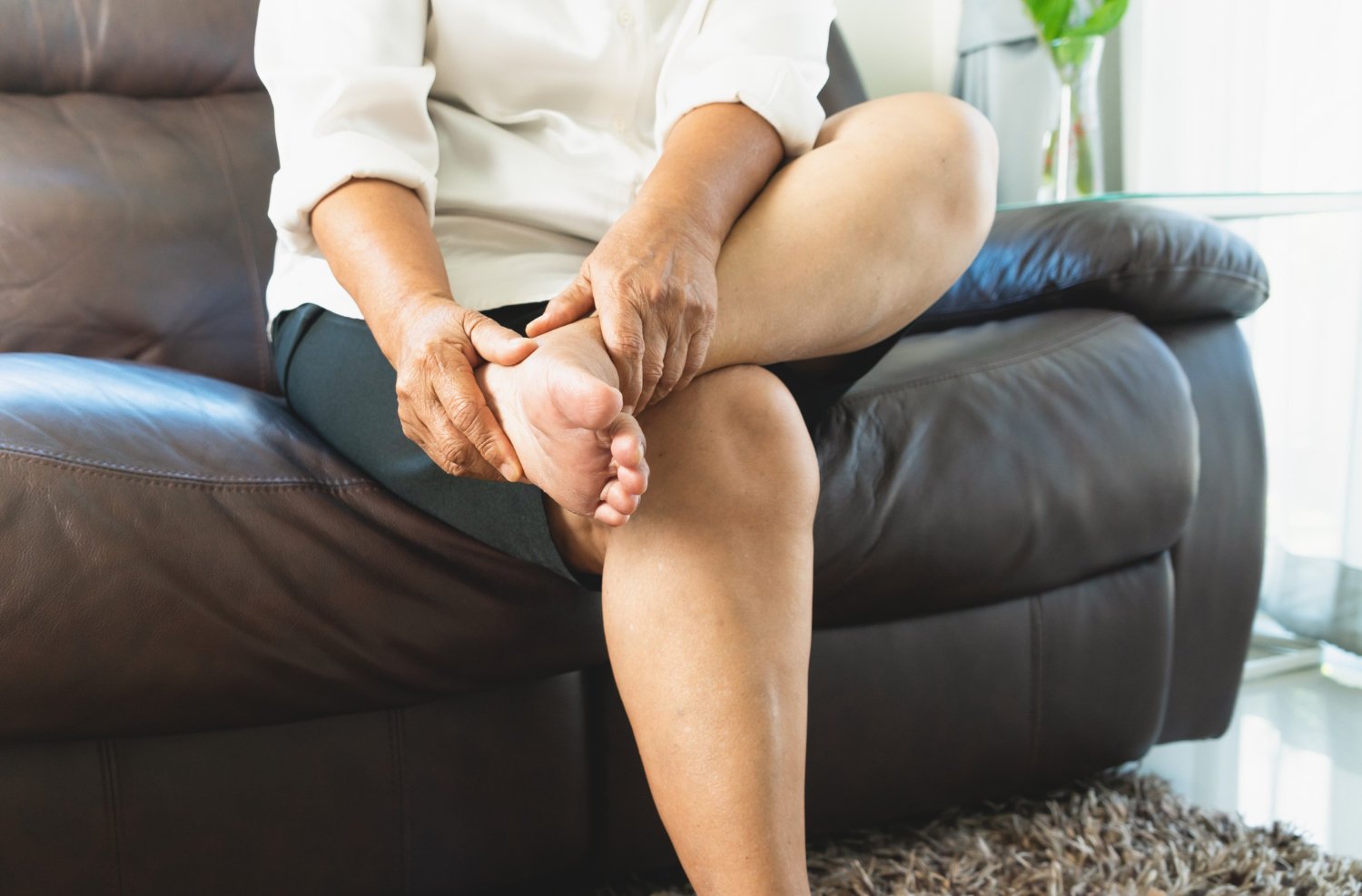Blogs
Diabetes Leg Pain: Symptoms, Treatment and Home Remedies
If you have diabetes leg pain is an all-too-common occurrence.You’re not alone in this struggle, whether it’s burning, shooting, deep ache—or any other discomfort.
Unfortunately, most people with diabetes don’t know much about this difficult issue’s potential causes and treatments.But the good news is that we’ve assembled a wealth of information on diabetes leg pain so that you can make informed decisions to get real relief from your symptoms!
Read on to learn more about what might be causing your diabetic leg pain and how to address it with medical attention or home remedies.
What Is Leg Pain?

Leg pain is a common symptom experienced by individuals living with diabetes.It is typically described as a burning, cramping, or stabbing sensation in the lower leg extremities, particularly the feet and legs.This type of pain can range from mild to severe and can be caused by various factors related to diabetes.
When Is Leg Pain Serious?
Leg pain can indicate something more serious, such as nerve damage or diabetic peripheral artery disease.Severe cases of leg diabetic neuropathy may cause severe pain and burning sensations in the feet and legs, as well as numbness and tingling.If you experience these symptoms, speak to your doctor immediately.
Why does diabetes cause leg pain?
Diabetes is a condition that affects the body’s ability to regulate blood sugar levels properly.When blood sugar levels remain consistently high, it can cause damage to the nerves in the feet and legs.
This damage disrupts signals between the brain and the peripheral nerves, resulting in pain.Additionally, elevated blood sugar levels can reduce circulation in the legs and feet, leading to decreased oxygen delivery and increased pain.
How does diabetes cause leg pain?
Diabetes causes leg pain in several ways.High blood sugar levels can damage the small blood vessels in your feet and legs, reducing circulation and decreasing oxygen delivery to the nerves.
This can cause burning, tingling, or numbness in the legs and feet.Diabetic neuropathy is caused by nerve damage that can lead to severe pain in the feet and legs.
Additionally, nerve damage can cause muscle cramps or spasms, which can be a source of pain for individuals with diabetes.
Complications from diabetic leg pain
Diabetic leg pain can have serious consequences.In extreme cases, poor circulation caused by narrowed or clogged arteries can lead to infection, ulcers, and even amputation.
Additionally, nerve damage associated with diabetic neuropathy can cause chronic pain and an increased risk of falls.
Treatment for diabetic leg pain

Treatment for diabetic leg pain can vary depending on the cause and severity of the condition.Pain medications, such as nonsteroidal anti-inflammatory drugs (NSAIDs) or opioids, may be prescribed to relieve pain.
Physical therapy, massage therapy, electrical stimulation, or acupuncture may also be recommended to reduce pain and improve circulation.If nerve damage is causing the pain, medications that block nerve signals may be prescribed.
In addition to conventional treatments, several home remedies can help reduce diabetic leg pain.Stretching and exercising regularly can help improve circulation in the legs and feet and maintain joint flexibility.Wearing comfortable shoes with good arch support and limiting activities that put excessive stress on the feet can also help.
Applying ice or heat to affected areas may also relieve pain.Living with diabetes is not easy, but taking steps to manage the condition and address any related complications is important.Paying attention to symptoms such as leg pain can help provide timely diagnosis and treatment, significantly improving quality of life.
If you are suffering from leg pain related to diabetes, talk to your doctor about treatment options.With the right care and support, it is possible to manage diabetic leg pain and live a healthy life.
Home remedies for diabetic leg pain
Exercise regularly
Exercise can increase circulation and reduce muscle tension. Light stretching, walking, or swimming can benefit those with diabetic leg pain.
Diet
Eating a balanced diet and avoiding unhealthy foods can help reduce and control blood sugar levels. Eating plenty of fiber, fruits, vegetables, and healthy fats is key.
Supplements
Supplements such as omega-3 fatty acids, vitamin D, and magnesium may help reduce inflammation and improve blood sugar levels. Speak to your doctor before taking any new supplements.
Stop smoking
Smoking can reduce blood flow and damage the nerves in your feet and legs. Quitting smoking can help reduce leg pain associated with diabetes.
Prevention of diabetic leg pain.

The best way to prevent diabetic leg pain is to manage diabetes proactively.Regular monitoring of blood sugar levels and eating a balanced diet are essential for managing the condition.
Additionally, regular exercise can help improve circulation and reduce inflammation.If you have any signs or symptoms of nerve damage, speak to your doctor immediately.
With proper care, it is possible to reduce the risk of diabetic leg pain and lead a healthy life.
When to See Your Healthcare Provider
If you are experiencing any signs or symptoms of diabetic leg pain, speak to your healthcare provider immediately.They can provide an accurate diagnosis and recommend appropriate treatment options.
Additionally, they can help develop a plan to manage diabetes and reduce the risk of further complications.With the right care and support, it is possible to control diabetic leg pain and lead a healthy life.
FAQs About diabetes leg pain
What does leg pain from diabetes feel like?
Diabetic leg pain is often described as a dull ache, like overexertion or fatigue.It can range from mild to severe and lasts a few hours or days.In some cases, it may be so intense that it becomes unbearable and difficult to move the legs.
How can diabetes cause sore legs and pain?
Diabetes can lead to a condition called peripheral neuropathy. High blood sugar levels over time can damage nerves, especially in the legs and feet, leading to pain, numbness, and a sensation of leg soreness.
What are the symptoms of diabetic legs?
Common symptoms of diabetic leg pain may include burning, stabbing, or shooting sensations; numbness and tingling; extreme sensitivity to touch; sudden muscle weakness in the legs or feet; cramping and tightness in the muscles; decreased range of motion; fatigue in the legs or feet even after rest.
In more severe cases, there may be skin discoloration, open wounds that won’t heal, and foot ulcers.
How do you stop leg pain with diabetes?
To stop leg pain with diabetes, you should start with lifestyle changes such as regular exercise, a healthy diet, and avoiding smoking.You may also want to consider taking supplements or certain medications that can help reduce inflammation and improve leg circulation.
Home remedies such as using cold or hot compresses and applying comfrey cream to sore leg areas can relieve mild discomfort.For more severe cases of diabetic leg pain, your healthcare provider may recommend specialized treatments such as laser therapy or surgery.
Can diabetic leg pain be reversed?
Diabetic leg pain can often be reversed with proper treatment and lifestyle modifications.
With improved blood glucose control, some people may experience less pain in their legs and decreased numbness, tingling, and burning sensations.Furthermore, regular exercise can help improve circulation and alleviate symptoms of diabetic leg pain.
Conclusion
All in all, living with diabetes can be difficult, and the leg pain that often comes along with it can make daily life challenging.Be sure to take the time to assess your symptoms and book an appointment with a doctor if necessary.
Don’t let your pain linger – it’s essential to get it under control as soon as possible so you don’t aggravate your condition.With so many treatment options available, there’s no excuse for not seeking help.
Put yourself first and practice better self-care to manage your diabetes and ensure a healthier lifestyle.Make an appointment now and come away feeling better than ever!
